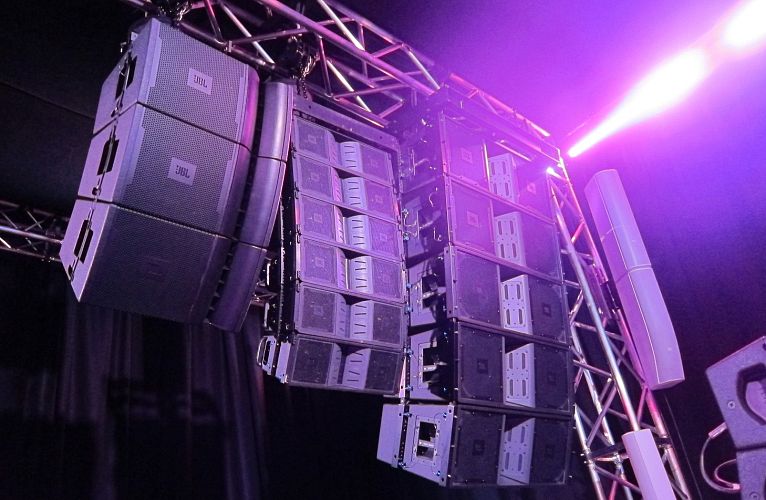
Acoustic systems: Types, classifications
Types of acoustic systems
Depending on the classification criterion, several types of acoustic systems can be distinguished. Each type has its pros and cons, understanding which will help make the right choice in favor of a particular configuration in each specific case.
Two-way, three-way and four-way speakers
According to the frequency reproduction width, acoustic speakers are divided into several types. The division of the frequency range into several smaller ones is associated with the technical difficulties of reproducing the entire range of frequencies audible to humans using one device and they are called “single-way”. Such speakers exist and the sound quality they provide is very low. The most common are two- and three-way acoustic speakers. In two-way acoustic speakers, low and mid frequencies are reproduced by a woofer – a large diffuser, and high frequencies – by a tweeter. In three-way acoustic speakers, each frequency range (LF, MF, HF) has its own speaker, which significantly improves the quality of reproduction in the entire range of frequencies audible to the ear (20 – 20000 Hz). There are four-way acoustic speakers, as well as speakers with an even greater number of frequency bands. The division of the input audio signal into separate frequency ranges is carried out by a crossover – a digital or analog filter, usually installed directly in the speaker.
Active and passive loudspeakers
A passive acoustic speaker consists of a radiator, for example, a diffuser and a crossover. In an active one, this set is also supplemented by its own power amplifier. Each option has its pros and cons.
- The advantages of passive systems include ease of connection and maintenance. For example, you can easily replace the central amplifier with another one without touching the other components of the acoustic speaker. Passive acoustics are also usually cheaper and lighter.
- The disadvantages of passive acoustics are the flip side of their advantages: in the absence of the speaker’s own amplifier, the requirements for the main amplifier of the system increase. And the passive nature of the crossover means higher heating of its components, inductors and capacitors, which, in turn, can lead to distortion of the sound during long playback. It is also believed that the passive crossover “steals” the power of the central amplifier, which is due to losses in the filter circuits. Passive acoustic systems are rarely more than two-way, which is explained by the high cost and bulkiness of the passive filter for LF/MF emitters. Due to the simplicity of passive acoustics, it is they, together with powerful amplifiers, that are most often used at large concert venues and in clubs.
- The advantages of acoustic active speakers include the following. Firstly, in an active loudspeaker, it is much easier to match the speaker itself with the power amplifier. And if in a passive acoustic column this coordination falls on the shoulders of the end user, then here the manufacturer has taken care of everything in advance. Secondly, in active acoustics, an amplifier is often installed for each speaker, i.e. one for low frequencies, one for mid frequencies, and so on (bi-amp, tri-amp circuits). As a result, intermodulation distortions of sound are significantly reduced – a side effect of any amplifier. The sound becomes cleaner and the damping factor of the electrical circuit decreases. Thirdly, active acoustics are much better suited to digital sound, because the presence of an active crossover allows you to adjust the sound parameters of each speaker within a fairly wide range. So you can, for example, imitate a certain sound or take into account the acoustic features of the room. Finally, it is necessary to note the third, intermediate type of loudspeakers. In them, only the speaker is active, i.e. receiving external power, while the crossover remains passive. Such speakers are passive in terms of sound quality and characteristics, although advertising materials may claim otherwise.






